Ecommerce (electronic commerce) is the buying and selling of goods and services over the internet. It includes online transactions between businesses, consumers, or both, enabling global commerce without geographical limitations.
The global ecommerce market is projected to reach $8.5 trillion by 2026, with over 2.4 billion online shoppers worldwide.
Explore Here: Confusing to Start an Ecommerce Business? Here is a Complete Guide!
What is Ecommerce?
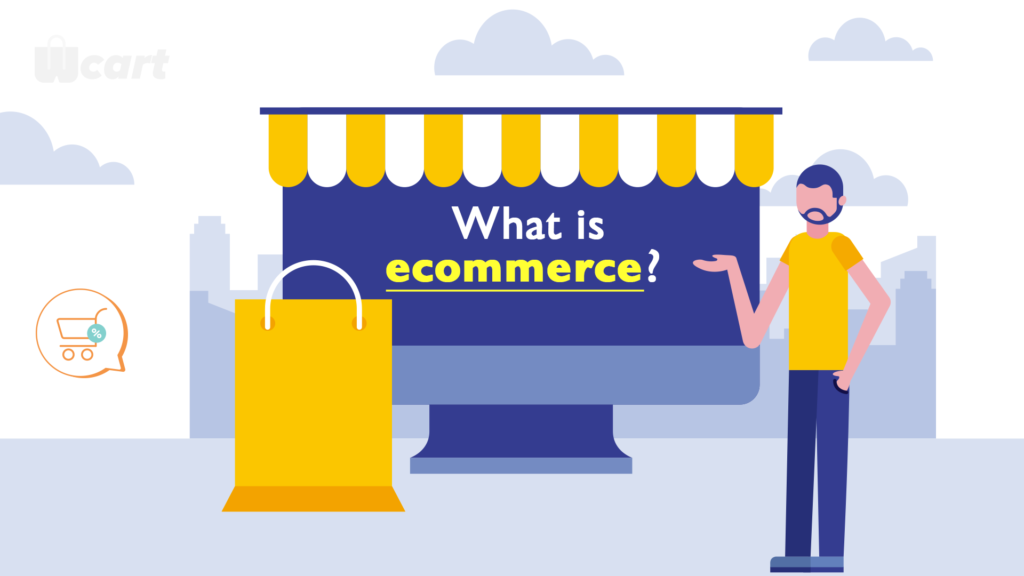
Ecommerce, short for electronic commerce, encompasses all commercial transactions conducted electronically over the internet.
This includes the online buying and selling of products, services, and digital content between businesses, consumers, or both.
Key Components of Ecommerce:
- Online storefronts and digital marketplaces
- Electronic payment systems and secure transactions
- Digital product catalogs and inventory management
- Order processing and fulfillment systems
- Customer service and support platforms
The ecommerce ecosystem has revolutionized traditional commerce by eliminating geographical barriers and enabling 24/7 global business operations.
With 24.1 million ecommerce stores currently operating worldwide, the United States accounts for approximately 39% of global ecommerce activity.
Read more: Difference Between Retail and Ecommerce
How Ecommerce Works
Ecommerce operates through integrated digital systems that facilitate online transactions:
The Ecommerce Process
- Product Display: Businesses showcase products/services on digital platforms
- Customer Browsing: Users search and compare products online
- Order Placement: Customers add items to cart and proceed to checkout
- Payment Processing: Secure payment gateways handle transactions
- Order Fulfillment: Products are prepared and shipped to customers
- Customer Service: Post-purchase support and returns management
Essential Technologies
- SSL certificates for secure data transmission
- Payment gateways (PayPal, Stripe, Square)
- Content Management Systems (CMS)
- Customer Relationship Management (CRM) tools
- Analytics and tracking platforms
Read more: Tips to Create an Ecommerce Website
History of Ecommerce
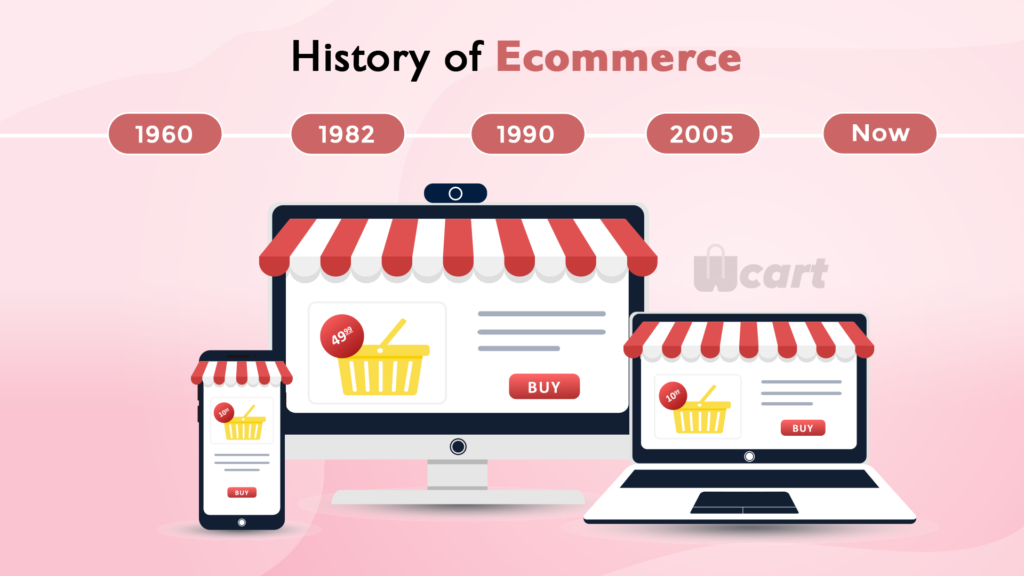
The evolution of ecommerce spans over five decades of technological advancement:
Timeline of Ecommerce Development
1960s-1970s: Foundation Era
- 1968: Electronic Data Interchange (EDI) development begins
- 1970s: First Electronic Funds Transfer (EFT) systems emerge
- Early teleshopping and catalog ordering systems
1980s: Digital Shopping Emergence
- 1984: First secure online transaction completed
- Introduction of videotex and Electronic Mall (eMall) concepts
- Development of encryption protocols for secure transactions
1990s: Internet Commercialization
- 1991: World Wide Web becomes publicly available
- 1994: Jeff Bezos launches Amazon as online bookstore
- 1995: eBay introduces online auction marketplace
- 1998: PayPal revolutionizes online payments
2000s: Expansion and Mobile Integration
- Recovery from dot-com bubble burst
- Rise of Alibaba in Asian markets
- 2007: iPhone launch accelerates mobile commerce
- Introduction of faster internet speeds globally
2010s-Present: Omnichannel and AI Integration
- Social commerce through Facebook and Instagram
- Subscription-based business models gain popularity
- AI-powered personalization and chatbots
- Voice commerce and smart speaker integration
Read More: To Know about Headless Ecommerce Solution
Types of Ecommerce
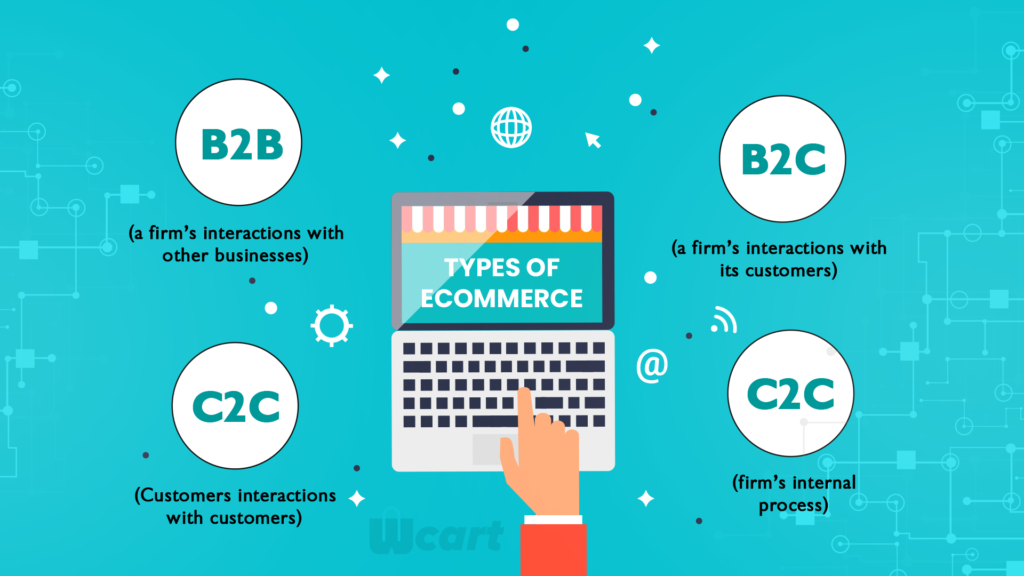
Understanding different ecommerce models helps businesses choose the right approach:
1. Business-to-Consumer (B2C)
Definition: Direct sales from businesses to individual consumers
- Examples: Amazon, Nike.com, Target.com
- Characteristics: Large product catalogs, consumer-friendly interfaces
- Market Size: Largest segment of ecommerce globally
2. Business-to-Business (B2B)
Definition: Commercial transactions between businesses
- Examples: Alibaba, Thomasnet, Grainger
- Characteristics: Bulk ordering, negotiated pricing, longer sales cycles
- Growth Rate: Fastest-growing ecommerce segment
3. Consumer-to-Consumer (C2C)
Definition: Peer-to-peer transactions facilitated by platforms
- Examples: eBay, Etsy, Facebook Marketplace
- Characteristics: Auction formats, used goods, handmade items
4. Consumer-to-Business (C2B)
Definition: Individuals selling products/services to businesses
- Examples: Upwork, Fiverr, Getty Images
- Characteristics: Freelance services, stock photography, consulting
5. Mobile Commerce (M-Commerce)
Definition: Transactions conducted via mobile devices
- Growth: 73% of global ecommerce sales by 2025 (projected)
- Features: App-based shopping, mobile payments, location-based services
6. Social Commerce
Definition: Shopping directly through social media platforms
- Platforms: Instagram Shopping, Facebook Shops, TikTok Shopping
- Trend: Integration of social media and ecommerce experiences
Read More: To Know about the Challenges Faced by the B2B Ecommerce
Setting up an Online Business
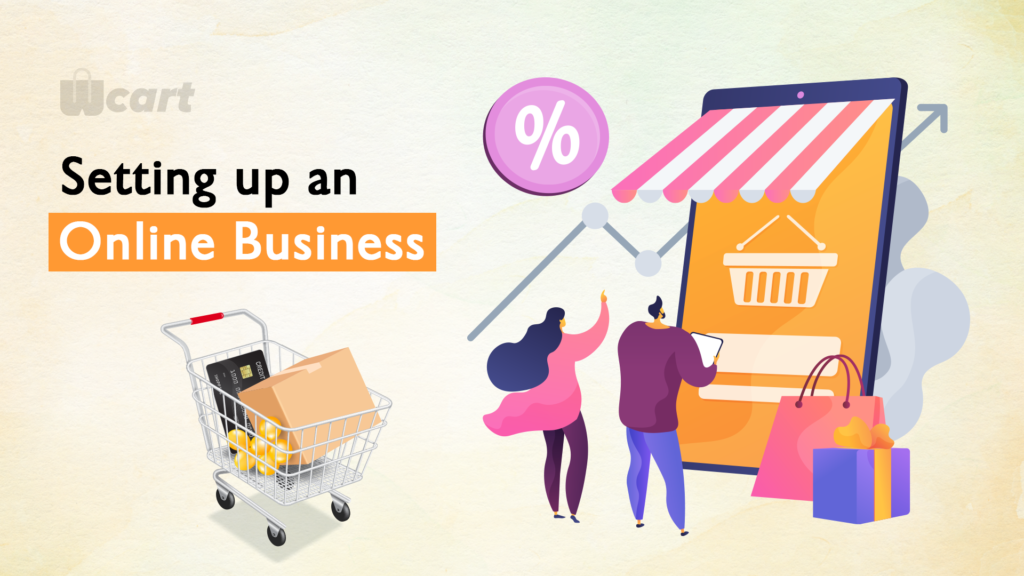
Setting Up an Ecommerce Business
Creating a successful ecommerce business requires strategic planning and execution:
Step-by-Step Setup Process:
1. Market Research and Niche Selection
- Identify target audience and demographics
- Analyze competitor strategies and pricing
- Validate product demand through surveys and testing
2. Business Registration and Legal Compliance
- Register business entity (LLC, Corporation, etc.)
- Obtain necessary licenses and permits
- Understand tax obligations and sales tax requirements
3. Choose Ecommerce Platform Popular platforms and their strengths:
- Shopify: User-friendly, extensive app ecosystem
- WooCommerce: WordPress integration, customizable
- Magento: Enterprise-level features, scalability
- BigCommerce: Built-in features, no transaction fees
4. Website Design and Development
- Responsive design for mobile optimization
- Fast loading speeds (under 3 seconds recommended)
- Intuitive navigation and user experience
- Professional product photography and descriptions
Read more: To Know About Ecommerce Website Development
5. Payment and Shipping Setup
- Multiple payment options (credit cards, digital wallets)
- Secure payment gateway integration
- Competitive shipping rates and options
- Return and refund policy development
6. Digital Marketing Strategy
- Search Engine Optimization (SEO)
- Pay-per-click (PPC) advertising
- Social media marketing
- Email marketing campaigns
- Content marketing and blogging
Benefits and Advantages of Ecommerce
Ecommerce offers significant advantages for both businesses and consumers:
For Businesses:
- Global Market Reach: Access to 2.4+ billion online shoppers worldwide
- Lower Operational Costs: Reduced need for physical retail space
- 24/7 Operations: Continuous sales without time zone limitations
- Data-Driven Insights: Customer behavior analytics and purchasing patterns
- Scalability: Easy expansion without geographical constraints
- Personalization: Tailored shopping experiences through AI and machine learning
For Consumers:
- Convenience: Shop anytime, anywhere from any device
- Price Comparison: Easy comparison shopping across multiple retailers
- Product Variety: Access to global inventory and unique products
- Time Savings: Elimination of travel time and physical store browsing
- Detailed Information: Comprehensive product descriptions and reviews
- Personalized Recommendations: AI-powered product suggestions
Economic Impact:
- Job Creation: 26.7 million ecommerce-related jobs in the US alone
- GDP Contribution: Ecommerce represents 15% of global retail sales
- Small Business Empowerment: Level playing field for entrepreneurs
Future of Ecommerce Trends
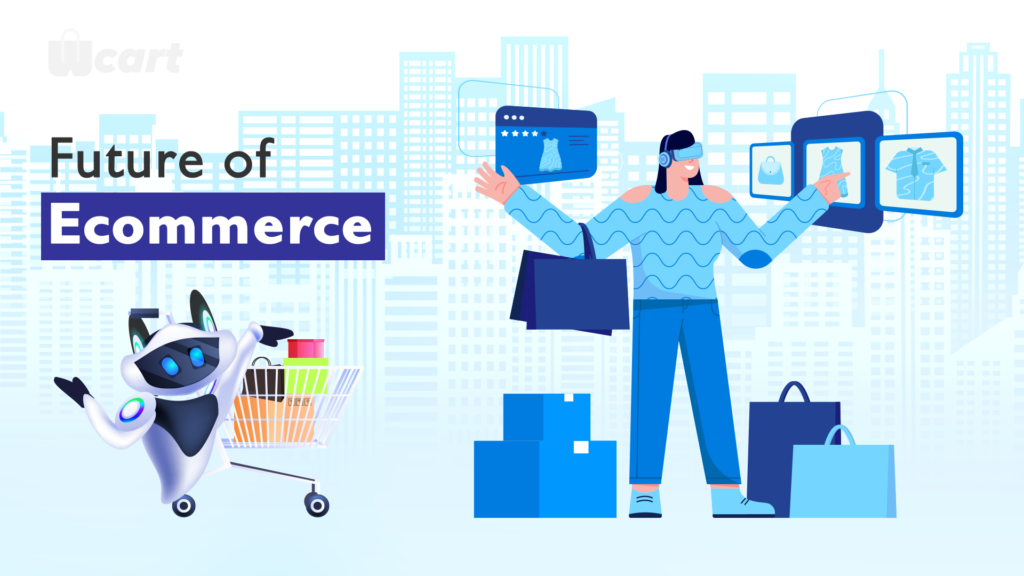
The ecommerce landscape continues evolving with emerging technologies and changing consumer behaviors
Key Trends Shaping the Future
1. Artificial Intelligence and Machine Learning
- Personalized product recommendations
- Chatbots and virtual shopping assistants
- Predictive analytics for inventory management
- Dynamic pricing optimization
2. Augmented Reality (AR) and Virtual Reality (VR)
- Virtual try-on experiences for clothing and accessories
- 3D product visualization in home environments
- Virtual showrooms and immersive shopping experiences
- Reduced return rates through better product visualization
3. Voice Commerce
- Smart speaker integration (Alexa, Google Assistant)
- Voice-activated shopping and reordering
- Optimization for voice search queries
- Hands-free shopping experiences
4. Sustainability and Ethical Commerce
- Eco-friendly packaging and carbon-neutral shipping
- Sustainable product sourcing and manufacturing
- Transparency in supply chain practices
- Consumer preference for environmentally responsible brands
5. Blockchain Technology
- Enhanced security for payment transactions
- Supply chain transparency and authentication
- Cryptocurrency payment integration
- Smart contracts for automated commerce
6. Same-Day and Instant Delivery
- On-demand delivery expectations
- Drone delivery services
- Autonomous vehicle logistics
- Local fulfillment centers
Read More: Detailed version on Future of Ecommerce
Example for Ecommerce Business
Success Stories Across Different Models:
B2C Example: Amazon
- Started as online bookstore in 1994
- Expanded to become “everything store”
- Prime membership program with 200+ million subscribers
- Annual revenue exceeding $500 billion
B2B Example: Alibaba
- Connects manufacturers with global buyers
- Facilitates over $1 trillion in annual transactions
- Serves 26 million active business buyers
- Dominates Asian B2B ecommerce market
C2C Example: eBay
- Pioneered online auction format
- 182 million active buyers globally
- Facilitates $100+ billion in annual sales volume
- Enables individual sellers to reach global markets
Specialized Platform Example: Etsy
- Focus on handmade and vintage items
- 96.3 million active buyers
- Empowers 7.5 million creative entrepreneurs
- Niche market leadership in artisan goods
Read more: How to Turn Your Passion into an Online Ecommerce Store
Conclusion
The future of ecommerce is about more than just transactions, it’s about delivering seamless, personalized, and sustainable experiences that truly connect with customers.
As technology advances, businesses embracing innovation in AI, augmented reality, and data-driven insights will lead the way.
To stay ahead, it’s essential to adapt to evolving expectations and harness smart tools that fuel growth and create lasting impact in the digital marketplace.
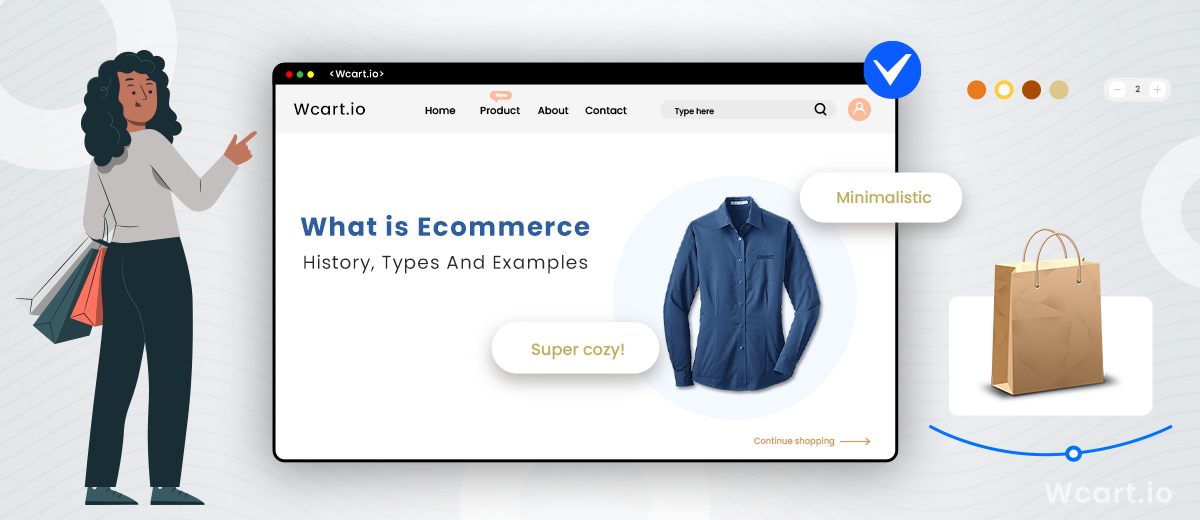



Leave a Reply